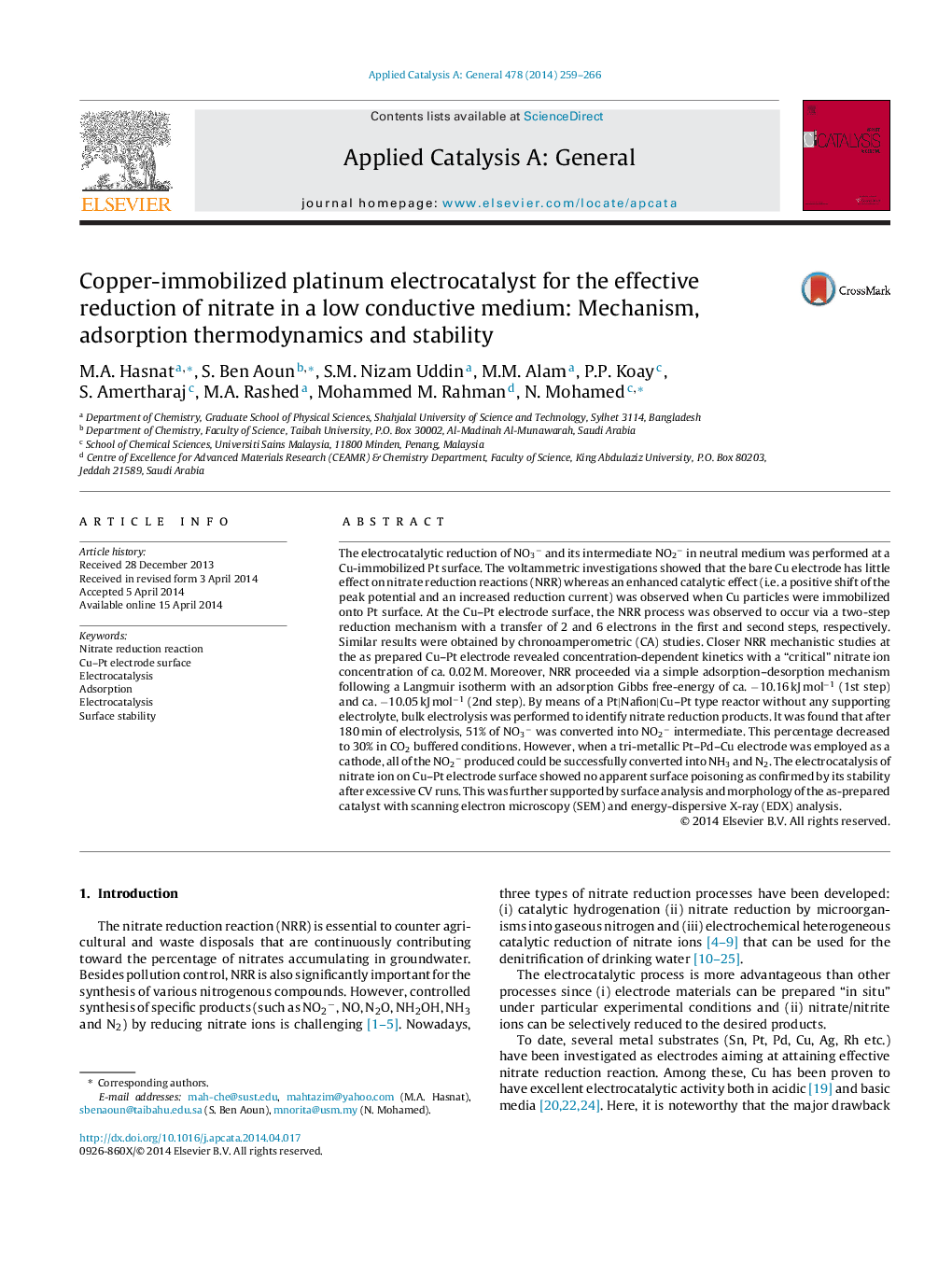| کد مقاله | کد نشریه | سال انتشار | مقاله انگلیسی | نسخه تمام متن |
|---|---|---|---|---|
| 39696 | 45831 | 2014 | 8 صفحه PDF | دانلود رایگان |
• Electrocatalytic reduction of nitrate ions has been performed at Pt–Cu surface.
• The Pt–Cu surface is more efficient than a pure Cu or Pt surface.
• The Pt–Cu catalyst exhibits stable performance in the neutral medium.
• The existence of Pd particles onto the Pt–Cu surface improves the catalytic efficiency.
The electrocatalytic reduction of NO3− and its intermediate NO2− in neutral medium was performed at a Cu-immobilized Pt surface. The voltammetric investigations showed that the bare Cu electrode has little effect on nitrate reduction reactions (NRR) whereas an enhanced catalytic effect (i.e. a positive shift of the peak potential and an increased reduction current) was observed when Cu particles were immobilized onto Pt surface. At the Cu–Pt electrode surface, the NRR process was observed to occur via a two-step reduction mechanism with a transfer of 2 and 6 electrons in the first and second steps, respectively. Similar results were obtained by chronoamperometric (CA) studies. Closer NRR mechanistic studies at the as prepared Cu–Pt electrode revealed concentration-dependent kinetics with a “critical” nitrate ion concentration of ca. 0.02 M. Moreover, NRR proceeded via a simple adsorption–desorption mechanism following a Langmuir isotherm with an adsorption Gibbs free-energy of ca. −10.16 kJ mol−1 (1st step) and ca. −10.05 kJ mol−1 (2nd step). By means of a Pt|Nafion|Cu–Pt type reactor without any supporting electrolyte, bulk electrolysis was performed to identify nitrate reduction products. It was found that after 180 min of electrolysis, 51% of NO3− was converted into NO2− intermediate. This percentage decreased to 30% in CO2 buffered conditions. However, when a tri-metallic Pt–Pd–Cu electrode was employed as a cathode, all of the NO2− produced could be successfully converted into NH3 and N2. The electrocatalysis of nitrate ion on Cu–Pt electrode surface showed no apparent surface poisoning as confirmed by its stability after excessive CV runs. This was further supported by surface analysis and morphology of the as-prepared catalyst with scanning electron microscopy (SEM) and energy-dispersive X-ray (EDX) analysis.
Figure optionsDownload high-quality image (204 K)Download as PowerPoint slide
Journal: Applied Catalysis A: General - Volume 478, 20 May 2014, Pages 259–266
